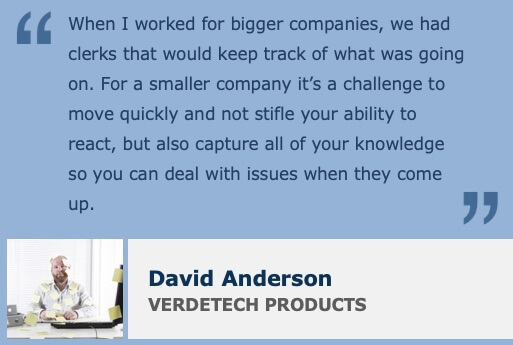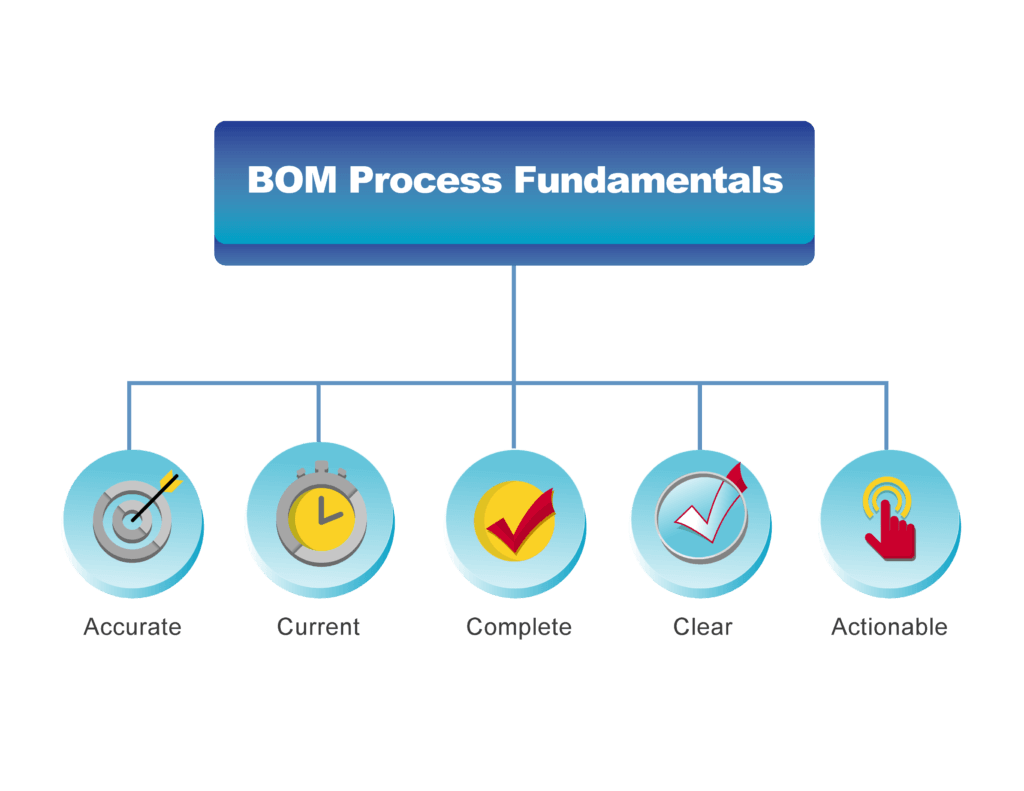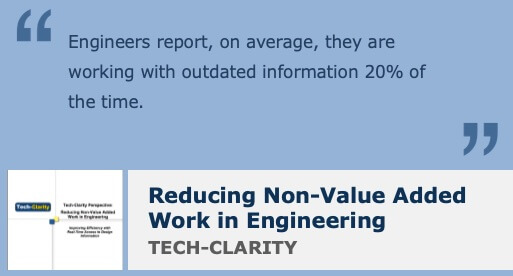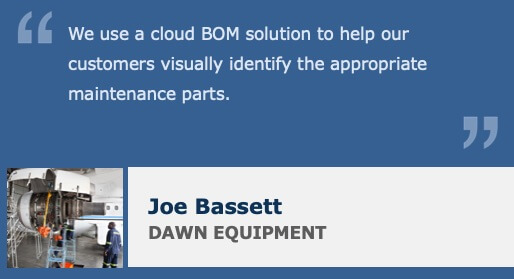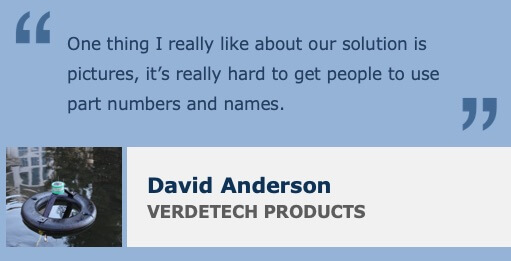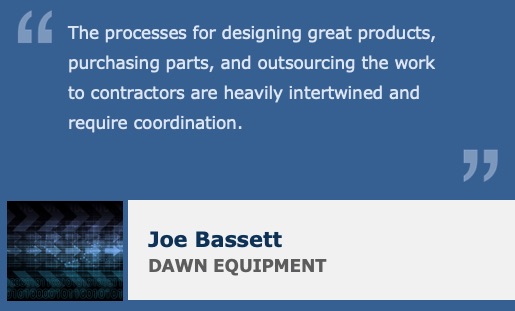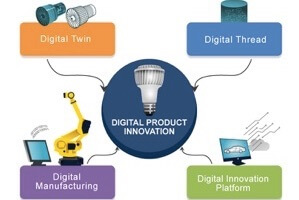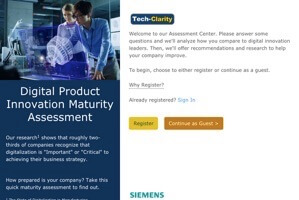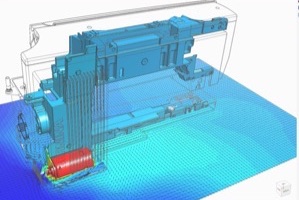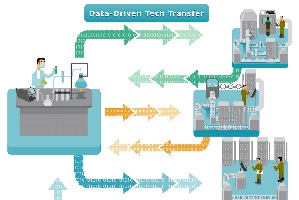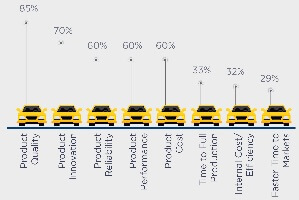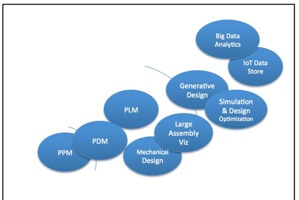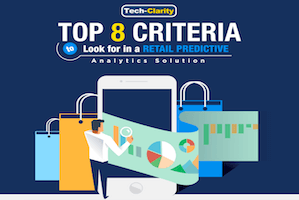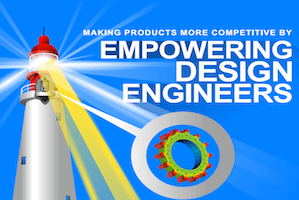Digital Product Innovation Maturity (survey results)
How can companies digitally transform product innovation to improve the way they conceive, design, and develop products to improve profitability and achieve or sustain market leadership? We surveyed over 150 companies to find out. Our new survey report, Improve Product Innovation and Profitability through Increased Digital Maturity, shares how digital product innovation is fundamentally reshaping…


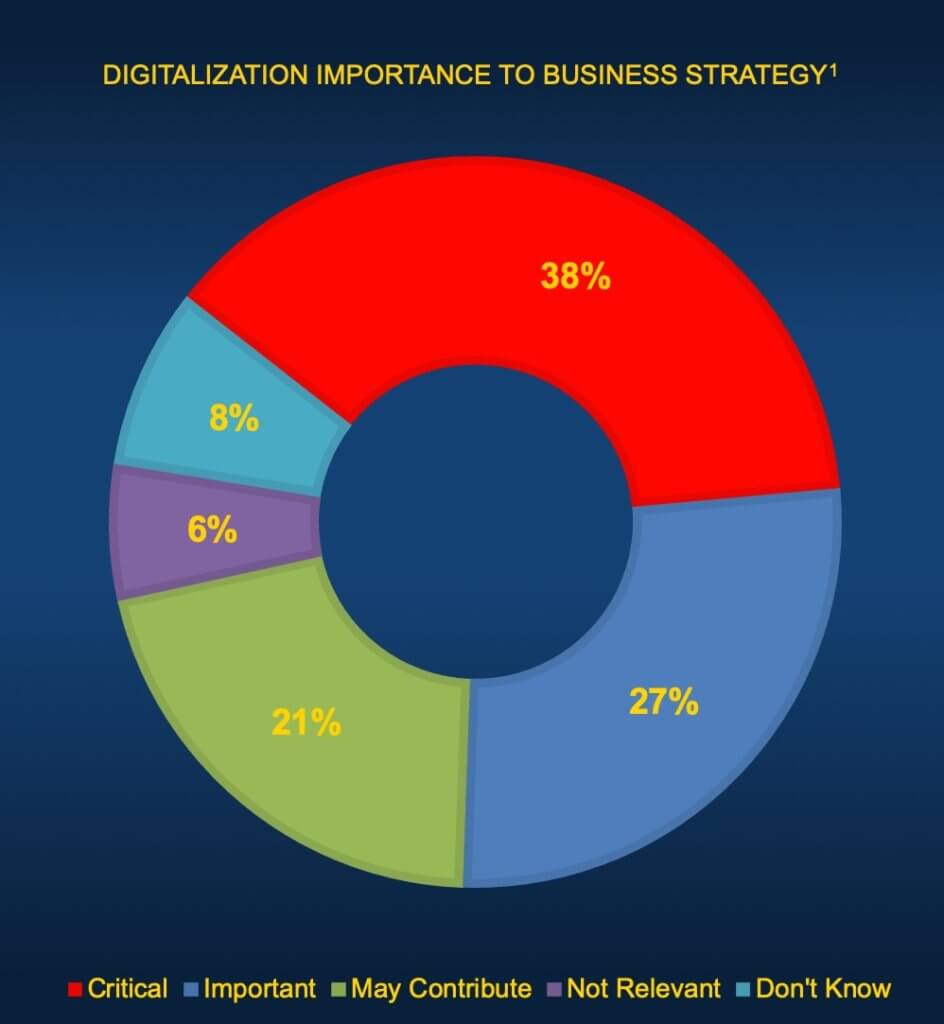

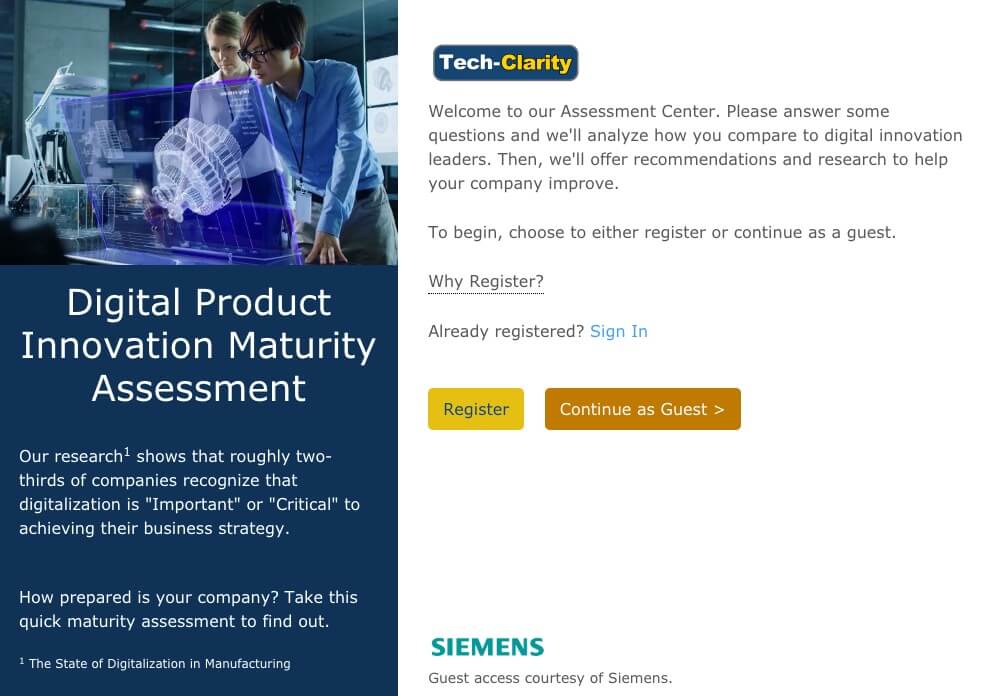

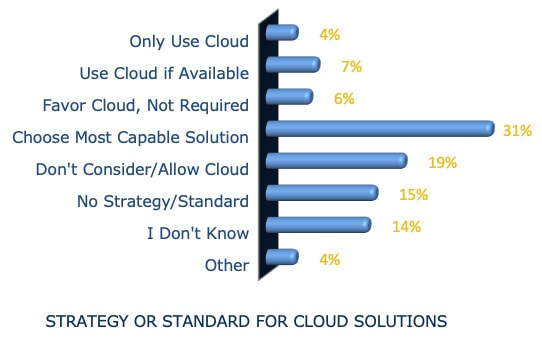
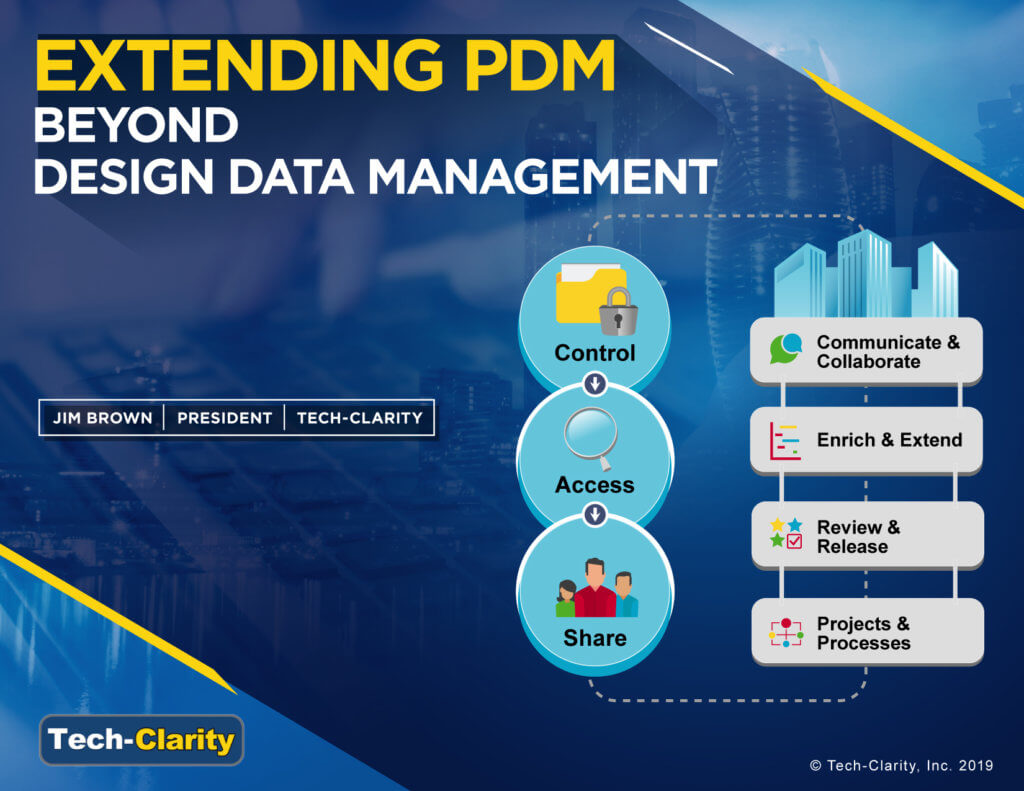
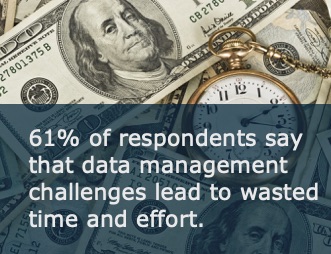

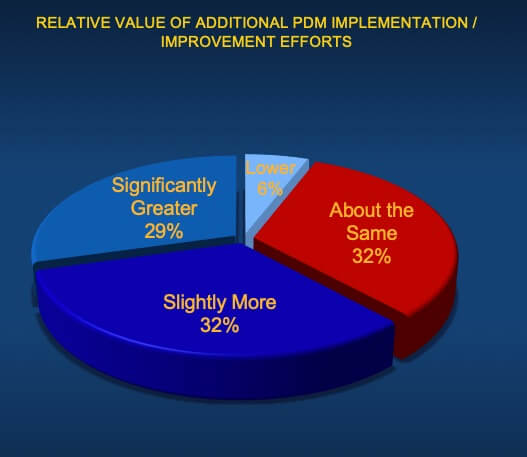







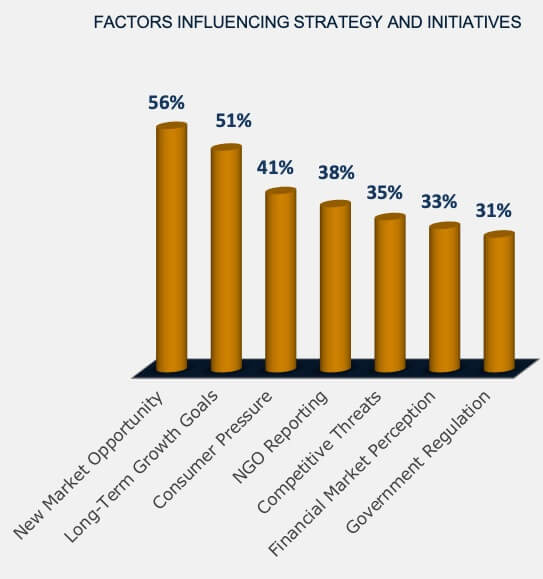






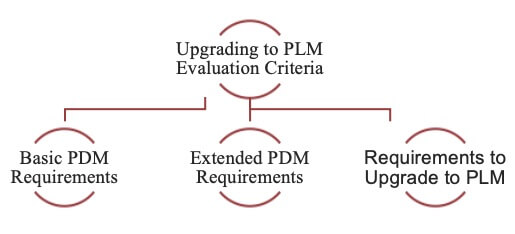




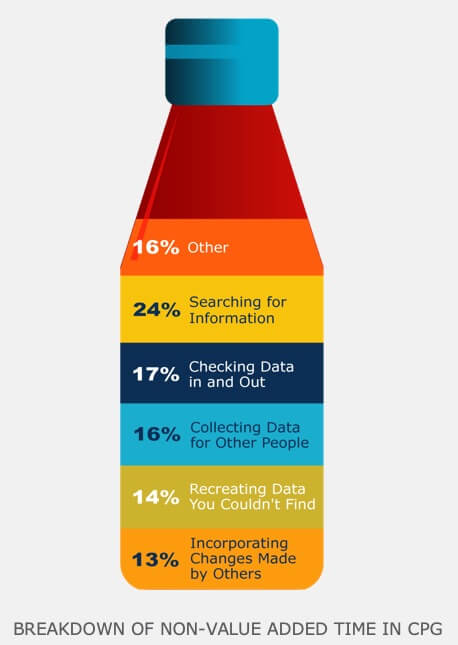
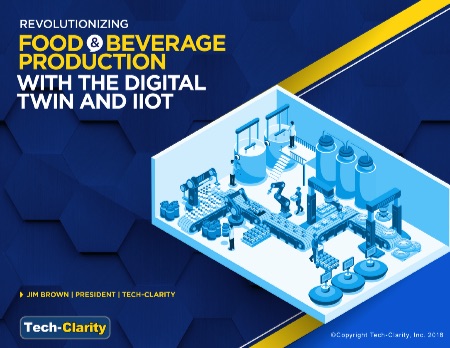
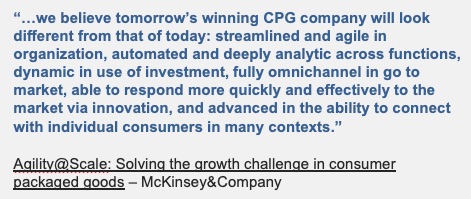
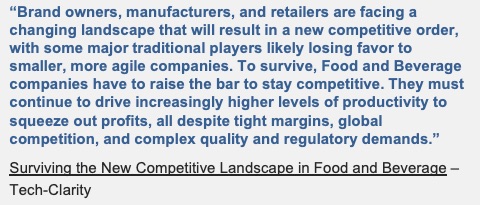
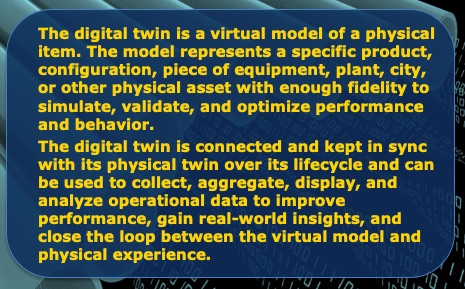
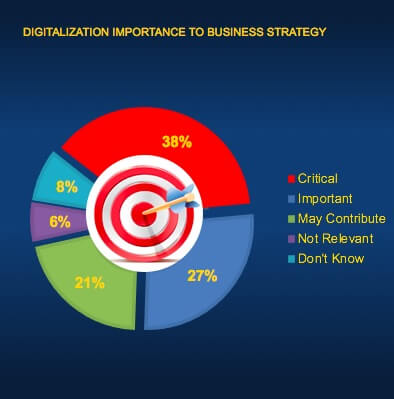

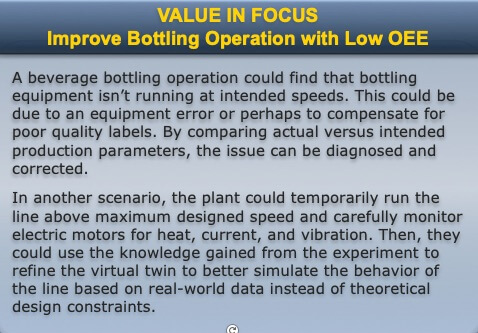

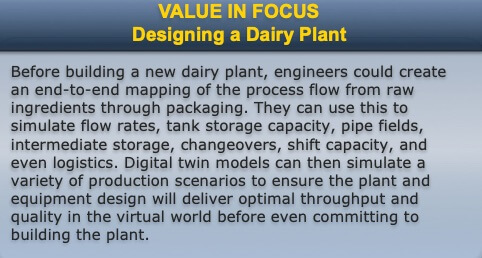

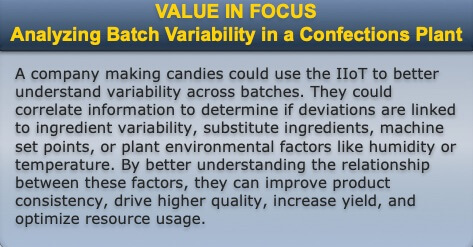
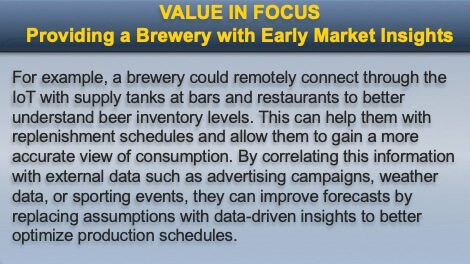
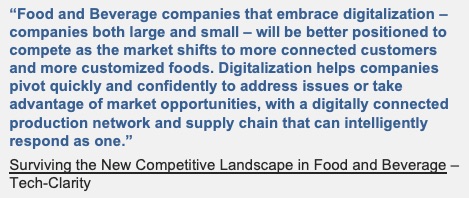

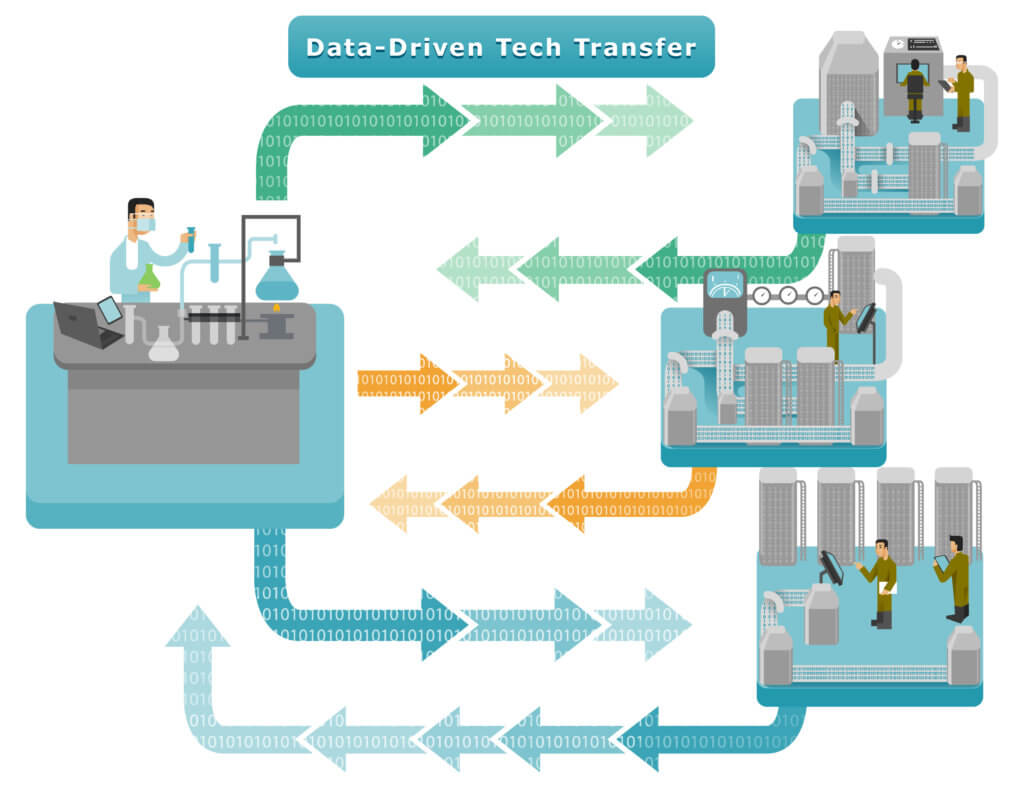



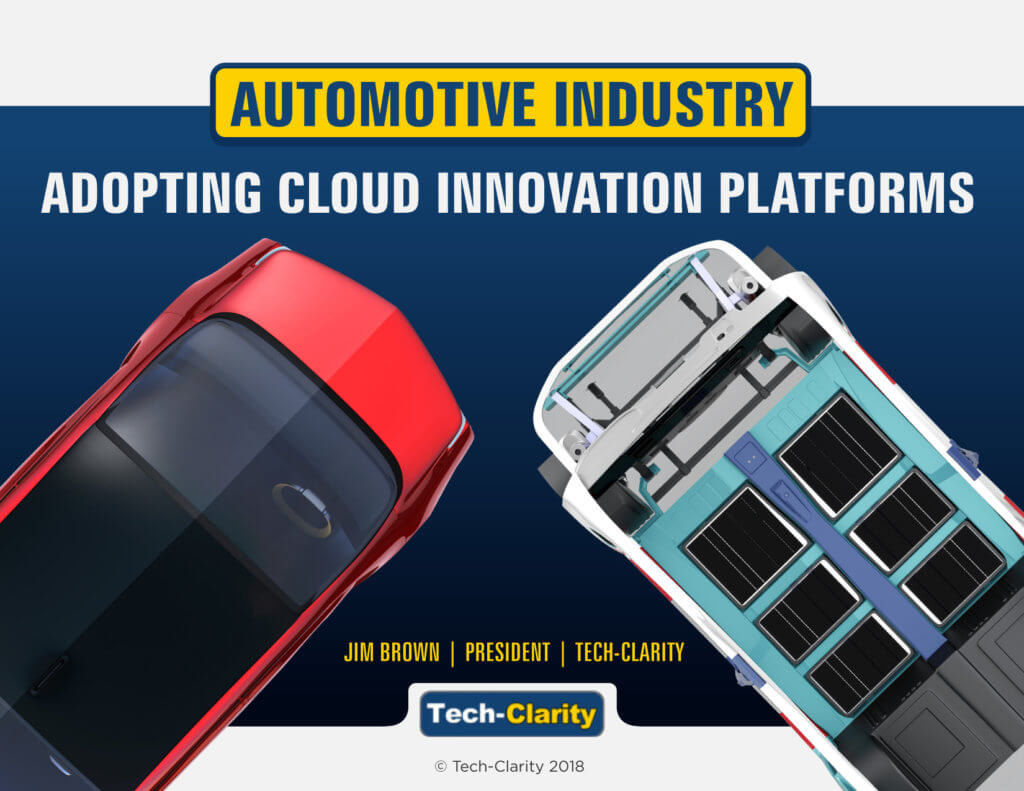 How can Automotive and Transportation companies leverage the cloud to improve innovation, engineering, and manufacturing across the product lifecycle? We conducted a survey to find out how Automotive manufacturers are approaching the cloud PIP opportunity. We gathered over 250 survey responses from manufacturing and engineering services firms, and took a closer look at approximately 100 of them in the Automotive industry. The research analyzes both challenges faced and benefits achieved by Auto companies using cloud-based applications. The eBook shares implementation, adoption, operational, and business benefits of cloud systems and how they impact today's digital auto manufacturer. The report also touches on some specific topics including the use of cloud standards and audits to help mitigate security risk and how cloud platforms enable value-added services in the context of innovation tasks.
Please enjoy the full eBook below for no charge or
How can Automotive and Transportation companies leverage the cloud to improve innovation, engineering, and manufacturing across the product lifecycle? We conducted a survey to find out how Automotive manufacturers are approaching the cloud PIP opportunity. We gathered over 250 survey responses from manufacturing and engineering services firms, and took a closer look at approximately 100 of them in the Automotive industry. The research analyzes both challenges faced and benefits achieved by Auto companies using cloud-based applications. The eBook shares implementation, adoption, operational, and business benefits of cloud systems and how they impact today's digital auto manufacturer. The report also touches on some specific topics including the use of cloud standards and audits to help mitigate security risk and how cloud platforms enable value-added services in the context of innovation tasks.
Please enjoy the full eBook below for no charge or  Before we explore the evolution to the cloud, it’s important to understand how PIP solutions have evolved. Engineering solutions have enabled companies to design products with unprecedented levels of innovation. They’ve advanced to model and simulate new materials, advanced manufacturing methods, systems, and other characteristics to more accurately predict product behavior.
These engineering tools are integrated with data and process management solutions that support products, processes, and programs. These PLM tools have expanded to support a broader view of the product and support a wider range of processes ranging from ideation to launch.
Needs Expand for the Digital Enterprise
The digital transformation demands more. Solutions must support a more integrated approach, enable data-driven design, and support model-based systems engineering. They need to support digital continuity where each engineering discipline contributes their design into a comprehensive, cohesive model. They must enable real-time, secure collaboration across domains and the supply chain whenever and wherever needed.
The PIP creates a comprehensive digital thread, supports a cohesive digital twin, and breaks the paradigm of disparate, file-based systems. And it’s now available on the cloud.
Before we explore the evolution to the cloud, it’s important to understand how PIP solutions have evolved. Engineering solutions have enabled companies to design products with unprecedented levels of innovation. They’ve advanced to model and simulate new materials, advanced manufacturing methods, systems, and other characteristics to more accurately predict product behavior.
These engineering tools are integrated with data and process management solutions that support products, processes, and programs. These PLM tools have expanded to support a broader view of the product and support a wider range of processes ranging from ideation to launch.
Needs Expand for the Digital Enterprise
The digital transformation demands more. Solutions must support a more integrated approach, enable data-driven design, and support model-based systems engineering. They need to support digital continuity where each engineering discipline contributes their design into a comprehensive, cohesive model. They must enable real-time, secure collaboration across domains and the supply chain whenever and wherever needed.
The PIP creates a comprehensive digital thread, supports a cohesive digital twin, and breaks the paradigm of disparate, file-based systems. And it’s now available on the cloud.
 Manufacturers and suppliers across industries have begun to adopt cloud solutions. Our research finds that an increasing number of companies are transitioning to the cloud in order to take advantage of significant benefits, including:
Manufacturers and suppliers across industries have begun to adopt cloud solutions. Our research finds that an increasing number of companies are transitioning to the cloud in order to take advantage of significant benefits, including:
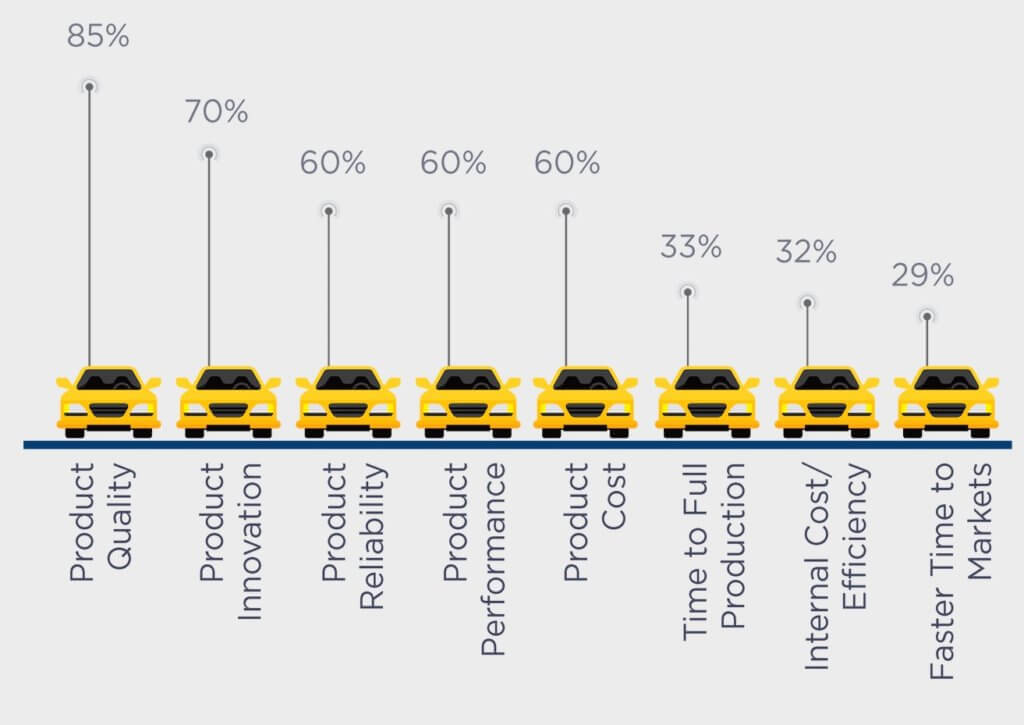 The PIP Delivers Product Excellence and Agility
Our research shows that an effective PIP can help improve all of these factors. These platforms, incorporating engineering tools and PLM capabilities, are proven to drive better product development results. The cloud is reducing the barriers to these PIP solutions and provides benefits in multiple dimensions, including affordability, flexibility, and agility. We explore these further in the survey.
The PIP Delivers Product Excellence and Agility
Our research shows that an effective PIP can help improve all of these factors. These platforms, incorporating engineering tools and PLM capabilities, are proven to drive better product development results. The cloud is reducing the barriers to these PIP solutions and provides benefits in multiple dimensions, including affordability, flexibility, and agility. We explore these further in the survey.
 Cloud Enables to Working Anytime, Anywhere
The most commonly reported business benefit is the flexibility to work anytime / anywhere, reported by two-thirds of participants. This is followed by ease of collaboration. This capability, along with the ability to have more integrated workflows as reported by about one-half of companies, allows OEMs and the supply chain to work together more efficiently and effectively. This is particularly important for Automotive companies given the global nature of their business, the need to be agile, and the integrated nature of the automotive value chain.
Automotive companies also pointed out the value of faster access to new capabilities, helping them get more value from their applications. The cloud gives companies flexibility in the capabilities they adopt and accelerates time to value.
Cloud Enables to Working Anytime, Anywhere
The most commonly reported business benefit is the flexibility to work anytime / anywhere, reported by two-thirds of participants. This is followed by ease of collaboration. This capability, along with the ability to have more integrated workflows as reported by about one-half of companies, allows OEMs and the supply chain to work together more efficiently and effectively. This is particularly important for Automotive companies given the global nature of their business, the need to be agile, and the integrated nature of the automotive value chain.
Automotive companies also pointed out the value of faster access to new capabilities, helping them get more value from their applications. The cloud gives companies flexibility in the capabilities they adopt and accelerates time to value.
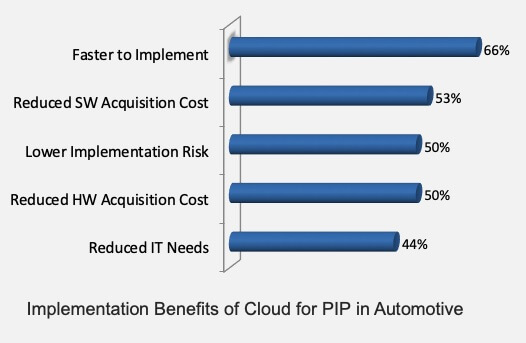 Other Benefits
Other benefits mentioned include lower hardware costs and reduced IT needs. Each of these can provide additional savings. It’s also interesting to note that reduced IT needs gives companies the flexibility to implement solutions faster because they don’t have to wait for internal resource availability.
Other Benefits
Other benefits mentioned include lower hardware costs and reduced IT needs. Each of these can provide additional savings. It’s also interesting to note that reduced IT needs gives companies the flexibility to implement solutions faster because they don’t have to wait for internal resource availability.
 Cloud Benefits Improve the Business, not Just IT
Ease of supporting multiple locations is reported by over one-half of participants. This can be a significant benefit for companies with global footprints that must support multiple sites. In addition, about one-third mention ease of supporting mobile devices. These results highlight the fact that the cloud makes accessing solutions easier, helping companies take advantage of their applications to improve the business. These factors also enable easier collaboration that can help drive the quality, innovation, reliability, performance, and cost improvements that automotive companies seek.
Lastly, it's an interesting note that about one-third observe that the cloud helps them get faster access to new capabilities - again helping companies be more nimble and get greater value from their applications.
Cloud Benefits Improve the Business, not Just IT
Ease of supporting multiple locations is reported by over one-half of participants. This can be a significant benefit for companies with global footprints that must support multiple sites. In addition, about one-third mention ease of supporting mobile devices. These results highlight the fact that the cloud makes accessing solutions easier, helping companies take advantage of their applications to improve the business. These factors also enable easier collaboration that can help drive the quality, innovation, reliability, performance, and cost improvements that automotive companies seek.
Lastly, it's an interesting note that about one-third observe that the cloud helps them get faster access to new capabilities - again helping companies be more nimble and get greater value from their applications.
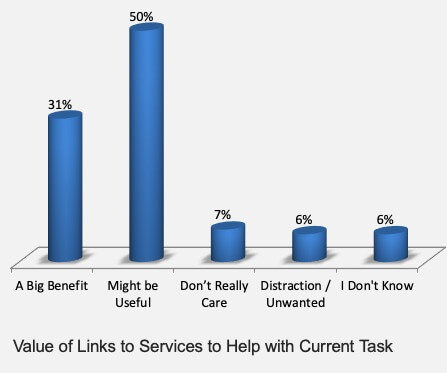 Automotive Companies Value New Services
Automotive companies have a very positive view on the value of services that could help them with their current task. The vast majority say these services might be useful or a big benefit, while very few share indifference or a belief that it would be distracting.
The Cloud Provides Targeted Services
Cloud software can provide targeted help because it’s aware of the function that users are performing and can provide tailored offers. It can also dynamically link to the right sources of assistance in a marketplace format, to help bring people together.
Finding help where it’s easy for people to connect via the Internet when they need something can be much more expedient than a typical search and procurement process. This is another area that can help companies deliver the quality, innovation, reliability, performance, and cost improvements they need to succeed.
Automotive Companies Value New Services
Automotive companies have a very positive view on the value of services that could help them with their current task. The vast majority say these services might be useful or a big benefit, while very few share indifference or a belief that it would be distracting.
The Cloud Provides Targeted Services
Cloud software can provide targeted help because it’s aware of the function that users are performing and can provide tailored offers. It can also dynamically link to the right sources of assistance in a marketplace format, to help bring people together.
Finding help where it’s easy for people to connect via the Internet when they need something can be much more expedient than a typical search and procurement process. This is another area that can help companies deliver the quality, innovation, reliability, performance, and cost improvements they need to succeed.
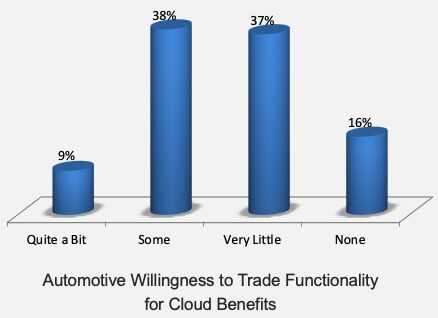 Mature Cloud PIP is now Available for Automotive
We believe taking this “software first” approach is the right priority for Automotive companies, because software capabilities provide the benefits of the Product Innovation Platform, including the highest success and profitability factors – quality, innovation, reliability, performance, and product cost. Now, Automotive companies can leverage robust PIP capabilities on the cloud.
Mature Cloud PIP is now Available for Automotive
We believe taking this “software first” approach is the right priority for Automotive companies, because software capabilities provide the benefits of the Product Innovation Platform, including the highest success and profitability factors – quality, innovation, reliability, performance, and product cost. Now, Automotive companies can leverage robust PIP capabilities on the cloud.
 Other Concerns
There are other concerns as well, but none that were reported as a significant risk by more than 15% of respondents. Companies should still pay attention to these needs and consider including key performance criteria in Service Level Agreements (SLAs) that incent providers to perform in these areas.
Automotive companies adopting the cloud will likely have to adjust their approach to upgrades, integration, and customization to work with their deployment option. But these solutions are well known as cloud experience across multiple domains has become commonplace.
Other Concerns
There are other concerns as well, but none that were reported as a significant risk by more than 15% of respondents. Companies should still pay attention to these needs and consider including key performance criteria in Service Level Agreements (SLAs) that incent providers to perform in these areas.
Automotive companies adopting the cloud will likely have to adjust their approach to upgrades, integration, and customization to work with their deployment option. But these solutions are well known as cloud experience across multiple domains has become commonplace.
 Lack of Awareness of Standards and Audits
About one-quarter of respondents say their company is unaware of cloud standards and audits. About another one-quarter are aware but not adopting them. Over another one-quarter say they don’t know if their company is aware of them. Implementing standards and audits is a clear opportunity for education and improvement that can help mitigate security risk.
Lack of Awareness of Standards and Audits
About one-quarter of respondents say their company is unaware of cloud standards and audits. About another one-quarter are aware but not adopting them. Over another one-quarter say they don’t know if their company is aware of them. Implementing standards and audits is a clear opportunity for education and improvement that can help mitigate security risk.
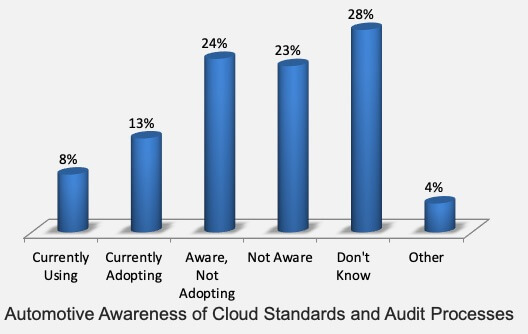
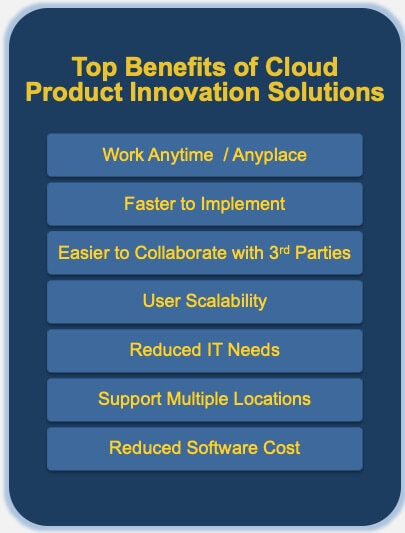 Based on this research and our experience, we recommend that Automotive companies:
Based on this research and our experience, we recommend that Automotive companies:
 [post_title] => Automotive Industry Adopting Cloud Innovation Platforms (eBook)
[post_excerpt] =>
[post_status] => publish
[comment_status] => open
[ping_status] => open
[post_password] =>
[post_name] => auto-cloud
[to_ping] =>
[pinged] =>
[post_modified] => 2022-11-14 22:28:17
[post_modified_gmt] => 2022-11-15 03:28:17
[post_content_filtered] =>
[post_parent] => 0
[guid] => https://tech-clarity.com/?p=7972
[menu_order] => 0
[post_type] => post
[post_mime_type] =>
[comment_count] => 0
[filter] => raw
)
[15] => WP_Post Object
(
[ID] => 7965
[post_author] => 2
[post_date] => 2019-07-01 16:59:55
[post_date_gmt] => 2019-07-01 20:59:55
[post_content] => What unique value does the cloud offer to companies using product innovation and engineering software? Our research identifies five categories of cloud benefits and finds some areas where the cloud really stands out for product innovation platforms.
[post_title] => Automotive Industry Adopting Cloud Innovation Platforms (eBook)
[post_excerpt] =>
[post_status] => publish
[comment_status] => open
[ping_status] => open
[post_password] =>
[post_name] => auto-cloud
[to_ping] =>
[pinged] =>
[post_modified] => 2022-11-14 22:28:17
[post_modified_gmt] => 2022-11-15 03:28:17
[post_content_filtered] =>
[post_parent] => 0
[guid] => https://tech-clarity.com/?p=7972
[menu_order] => 0
[post_type] => post
[post_mime_type] =>
[comment_count] => 0
[filter] => raw
)
[15] => WP_Post Object
(
[ID] => 7965
[post_author] => 2
[post_date] => 2019-07-01 16:59:55
[post_date_gmt] => 2019-07-01 20:59:55
[post_content] => What unique value does the cloud offer to companies using product innovation and engineering software? Our research identifies five categories of cloud benefits and finds some areas where the cloud really stands out for product innovation platforms.
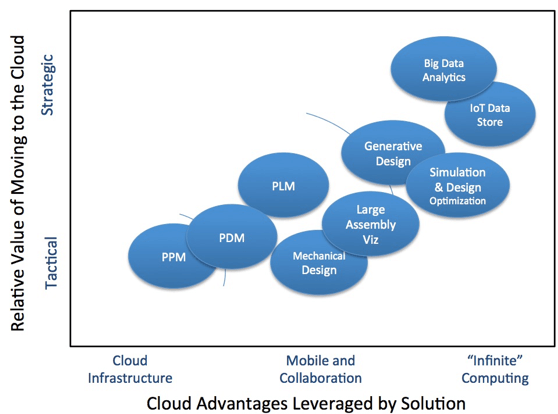
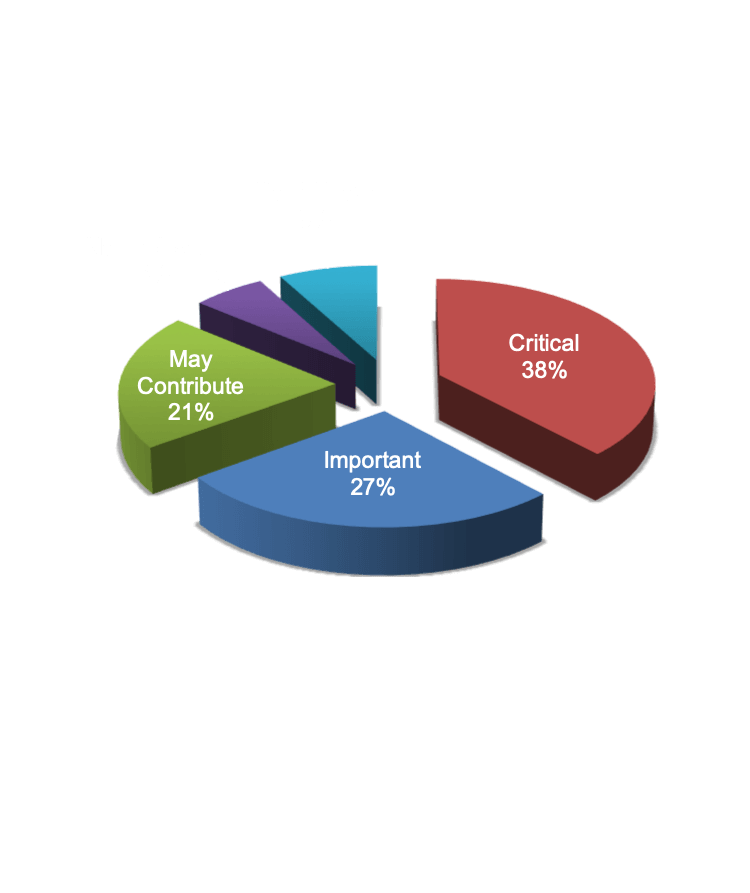 Manufacturing is Undergoing a Revolution
The manufacturing industries are getting more challenging. Manufacturers must evolve as new technologies remove barriers to entry and enable new, digital players to challenge market share. Operational efficiency is no longer enough to compete in today’s era of digitalization and Industry 4.0.
To remain competitive, companies have to maintain high productivity while offering unprecedented levels of flexibility and responsiveness. We believe this is a fundamental disruption that will change the status quo. To survive, manufacturers need to digitalize operations in order to improve speed, agility, quality, costs, customer satisfaction, and the ability to tailor to customer and market needs.
Raising the Bar with Digitalization: The Digital Twin
One of the most compelling digitalization opportunities is adopting the digital twin. This approach combines a number of digital technologies to significantly improve quality and productivity. It starts with comprehensive, virtual models of physical assets – products and production lines – to help optimize designs. But the value is much greater because the physical and virtual twins are connected and kept in sync with real data from the Internet of Things (IoT) and Industrial IoT (IIoT). Further, companies can use analytics to analyze digital twin data to develop deep insights and intelligence that allow for real-time intervention and long-term, continuous improvement.
The Digital Twin’s Impact on the Plant
The digital twin holds significant productivity and quality opportunities for the plant. It can be used to understand when the plant isn’t operating as intended. It can identify or predict equipment issues that can result in unplanned downtime or correct process deviations before they result in quality slippage, scrap, and rework. In addition, it can significantly further benefits already achieved by six sigma programs and support greater continuous improvement. Let’s learn how manufacturers can leverage the digital twin to improve plant performance and product quality.
Manufacturing is Undergoing a Revolution
The manufacturing industries are getting more challenging. Manufacturers must evolve as new technologies remove barriers to entry and enable new, digital players to challenge market share. Operational efficiency is no longer enough to compete in today’s era of digitalization and Industry 4.0.
To remain competitive, companies have to maintain high productivity while offering unprecedented levels of flexibility and responsiveness. We believe this is a fundamental disruption that will change the status quo. To survive, manufacturers need to digitalize operations in order to improve speed, agility, quality, costs, customer satisfaction, and the ability to tailor to customer and market needs.
Raising the Bar with Digitalization: The Digital Twin
One of the most compelling digitalization opportunities is adopting the digital twin. This approach combines a number of digital technologies to significantly improve quality and productivity. It starts with comprehensive, virtual models of physical assets – products and production lines – to help optimize designs. But the value is much greater because the physical and virtual twins are connected and kept in sync with real data from the Internet of Things (IoT) and Industrial IoT (IIoT). Further, companies can use analytics to analyze digital twin data to develop deep insights and intelligence that allow for real-time intervention and long-term, continuous improvement.
The Digital Twin’s Impact on the Plant
The digital twin holds significant productivity and quality opportunities for the plant. It can be used to understand when the plant isn’t operating as intended. It can identify or predict equipment issues that can result in unplanned downtime or correct process deviations before they result in quality slippage, scrap, and rework. In addition, it can significantly further benefits already achieved by six sigma programs and support greater continuous improvement. Let’s learn how manufacturers can leverage the digital twin to improve plant performance and product quality.
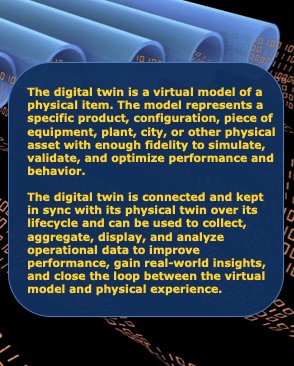 Develop Comprehensive Virtual Models (the Virtual Twin)
First, let’s step back to discuss what a digital twin is and, more importantly, how it creates business value. Digital twins consist of a virtual model and a physical item that are identical. At the core, the virtual component of the twin is a model that is rich enough to simulate and predict the physical item’s behavior. These representations can be used to optimize and validate designs early in the product or asset lifecycle and are subsequently kept in sync with the physical item throughout its life.
The digital twin concept can be applied to a number of different physical items:
Develop Comprehensive Virtual Models (the Virtual Twin)
First, let’s step back to discuss what a digital twin is and, more importantly, how it creates business value. Digital twins consist of a virtual model and a physical item that are identical. At the core, the virtual component of the twin is a model that is rich enough to simulate and predict the physical item’s behavior. These representations can be used to optimize and validate designs early in the product or asset lifecycle and are subsequently kept in sync with the physical item throughout its life.
The digital twin concept can be applied to a number of different physical items:
 Develop Virtual Twins of Products
The first way many people think of the digital twin is as a digital model of a product. This typically starts with a 3D CAD model, but also captures much of the information captured in model-based design approaches. For today’s smart products, the model typically incorporates electronic, software, and systems designs.
The virtual product twin can be used to simulate and communicate planned product behavior and predict product characteristics like throughput, torque, energy consumption, or other performance characteristics. To do this, the virtual twin must accurately represent a specific configuration or unit of the product and be kept up to date with changes. The product model should also include production requirements to support a design anywhere / produce anywhere strategy.
Create Virtual Twins of the Plant
One manufacturer’s product may be the equipment in another’s plant. The virtual model concept extends to equipment, work stations, lines, and entire plants. These twins should completely model production at the appropriate level of granularity for their intended purpose.
The twin can also include the virtual twin of products being produced and the operators running the plant.
These models can be used to simulate and optimize production plans, plant layouts, materials flows, and equipment. Manufacturers can use the models to virtually operate the plant all the way down to control code in order to detect collisions, bottlenecks, and analyze throughput. This allows them to optimize production behavior virtually to get designs right before making physical investments.
Finally, virtual twins can be used to develop code for CNC equipment that can be run and validated on virtual PLCs using an approach known as “software in the loop.” This code can then be used for virtual commissioning to speed ramp up and changeovers.
Develop Virtual Twins of Products
The first way many people think of the digital twin is as a digital model of a product. This typically starts with a 3D CAD model, but also captures much of the information captured in model-based design approaches. For today’s smart products, the model typically incorporates electronic, software, and systems designs.
The virtual product twin can be used to simulate and communicate planned product behavior and predict product characteristics like throughput, torque, energy consumption, or other performance characteristics. To do this, the virtual twin must accurately represent a specific configuration or unit of the product and be kept up to date with changes. The product model should also include production requirements to support a design anywhere / produce anywhere strategy.
Create Virtual Twins of the Plant
One manufacturer’s product may be the equipment in another’s plant. The virtual model concept extends to equipment, work stations, lines, and entire plants. These twins should completely model production at the appropriate level of granularity for their intended purpose.
The twin can also include the virtual twin of products being produced and the operators running the plant.
These models can be used to simulate and optimize production plans, plant layouts, materials flows, and equipment. Manufacturers can use the models to virtually operate the plant all the way down to control code in order to detect collisions, bottlenecks, and analyze throughput. This allows them to optimize production behavior virtually to get designs right before making physical investments.
Finally, virtual twins can be used to develop code for CNC equipment that can be run and validated on virtual PLCs using an approach known as “software in the loop.” This code can then be used for virtual commissioning to speed ramp up and changeovers.
 Gain Greater Value from Connected Digital Twins
The value of digital twins specific to manufacturing is greatly enhanced when the virtual and physical twins are connected via the IIoT. Manufacturer operations can produce a lot of data. For example, companies may already have MES and other control data, but they traditionally have trouble unlocking the value from it. The value of this data is made tangible when it’s put into the context of the digital model. Connecting the virtual and physical twins allows companies to compare actual to expected results and behavior of plants, product lines, work cells, machines, and even the products produced. The digital twin helps them gain intelligence from the data instead of simply storing it away.
Connect and Analyze Plant and Product Virtual Twins
Manufacturers can learn a lot from discrepancies between expected performance predicted using the virtual twin and measured performance of the physical twin. The twin defines what “good” looks like in production and what “right” looks like with the products. Variances from simulated values may identify issues in the plant that can be diagnosed and remedied to bring performance back into plan.
A more complete digital approach leverages analytics and the cloud. Analytics creates deeper insights to gain product and process intelligence. Let’s take a look at how the intelligence derived from the digital twin drives tangible business value for manufacturers.
Gain Greater Value from Connected Digital Twins
The value of digital twins specific to manufacturing is greatly enhanced when the virtual and physical twins are connected via the IIoT. Manufacturer operations can produce a lot of data. For example, companies may already have MES and other control data, but they traditionally have trouble unlocking the value from it. The value of this data is made tangible when it’s put into the context of the digital model. Connecting the virtual and physical twins allows companies to compare actual to expected results and behavior of plants, product lines, work cells, machines, and even the products produced. The digital twin helps them gain intelligence from the data instead of simply storing it away.
Connect and Analyze Plant and Product Virtual Twins
Manufacturers can learn a lot from discrepancies between expected performance predicted using the virtual twin and measured performance of the physical twin. The twin defines what “good” looks like in production and what “right” looks like with the products. Variances from simulated values may identify issues in the plant that can be diagnosed and remedied to bring performance back into plan.
A more complete digital approach leverages analytics and the cloud. Analytics creates deeper insights to gain product and process intelligence. Let’s take a look at how the intelligence derived from the digital twin drives tangible business value for manufacturers.

 Monitor and Maintain Product Quality
The next way that digital twins offer tangible business value to plants is by improving quality. Manufacturers can use the IIoT to monitor production and compare it to the digital twin to find goods that are trending out of spec. For example, they could compare product tolerances with IIoT feeds from metrology devices to find anomalies. Then, they can use trend charts, histograms, or dashboards with alerts to identify potential quality slippage.
Control and Assure Process Quality
In addition to measuring production output, manufacturers can monitor the production process to build quality in. They can collect KPIs like cycle times or track control parameters to identify when processes aren’t fully in control so they can intervene.
Manufacturers can also use analytics to understand the relationship between variability in production specifications and output to help identify factors that lead to quality slippage. They can use artificial intelligence (AI) to gain insights from a combination of enterprise system data, environmental conditions, operator information, equipment setup, and machine settings. This can help them close the loop between engineering and actual resulting product performance characteristics, for example finding relationships between equipment settings or environmental factors and defects. They can also leverage AI to identify early indicators that production isn’t behaving as expected in order to identify and correct errors in real time.
Monitor and Maintain Product Quality
The next way that digital twins offer tangible business value to plants is by improving quality. Manufacturers can use the IIoT to monitor production and compare it to the digital twin to find goods that are trending out of spec. For example, they could compare product tolerances with IIoT feeds from metrology devices to find anomalies. Then, they can use trend charts, histograms, or dashboards with alerts to identify potential quality slippage.
Control and Assure Process Quality
In addition to measuring production output, manufacturers can monitor the production process to build quality in. They can collect KPIs like cycle times or track control parameters to identify when processes aren’t fully in control so they can intervene.
Manufacturers can also use analytics to understand the relationship between variability in production specifications and output to help identify factors that lead to quality slippage. They can use artificial intelligence (AI) to gain insights from a combination of enterprise system data, environmental conditions, operator information, equipment setup, and machine settings. This can help them close the loop between engineering and actual resulting product performance characteristics, for example finding relationships between equipment settings or environmental factors and defects. They can also leverage AI to identify early indicators that production isn’t behaving as expected in order to identify and correct errors in real time.
 Get Started
To get started, manufacturers can choose between a number of valuable initiatives to leverage the digital twin, IIoT, and analytics. For example, they can use the digital twin, IIoT, and analytics to:
Get Started
To get started, manufacturers can choose between a number of valuable initiatives to leverage the digital twin, IIoT, and analytics. For example, they can use the digital twin, IIoT, and analytics to:

 How can you empower design engineers to make more informed decisions that can help set your products apart from the competition?
Tech-Clarity’s Empowering Design Engineer infographic helps answer this question based on a survey of 195 companies.
The infographic reveals top qualities that will make products more competitive over the next five years. These product qualities depend on good engineering decisions. Yet, 76% rate these decisions as ‘somewhat hard’ to ‘extremely difficult.’
The infographic uncovers a potential approach to make these decisions easier. The infographic also explores how new approaches to simulation may help make CAE a powerful tool for design engineers.
How can you empower design engineers to make more informed decisions that can help set your products apart from the competition?
Tech-Clarity’s Empowering Design Engineer infographic helps answer this question based on a survey of 195 companies.
The infographic reveals top qualities that will make products more competitive over the next five years. These product qualities depend on good engineering decisions. Yet, 76% rate these decisions as ‘somewhat hard’ to ‘extremely difficult.’
The infographic uncovers a potential approach to make these decisions easier. The infographic also explores how new approaches to simulation may help make CAE a powerful tool for design engineers.



